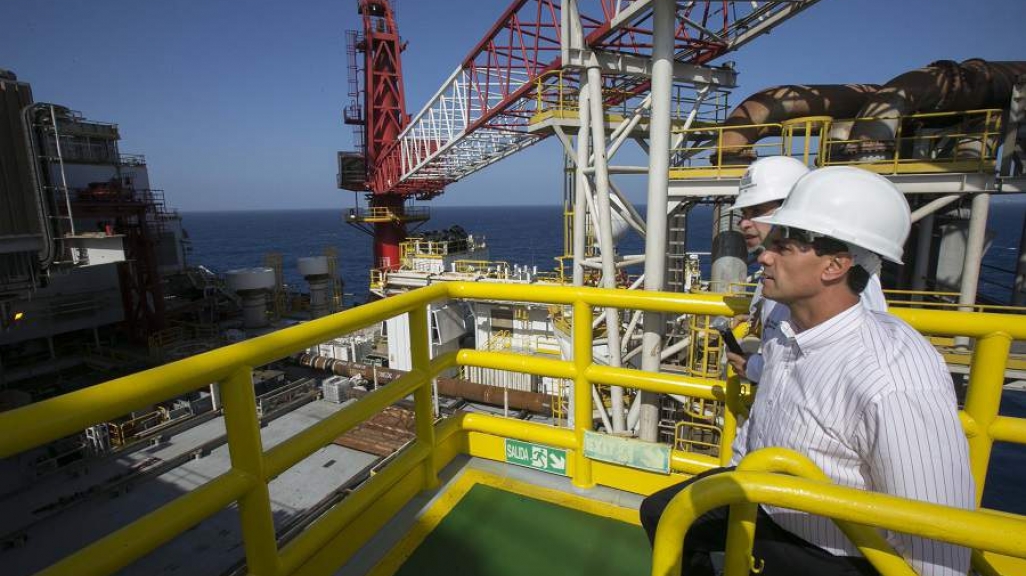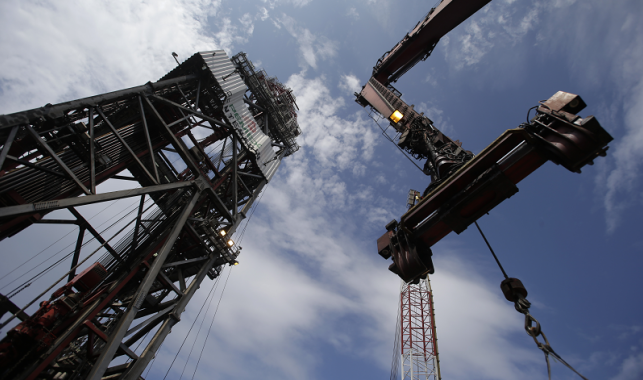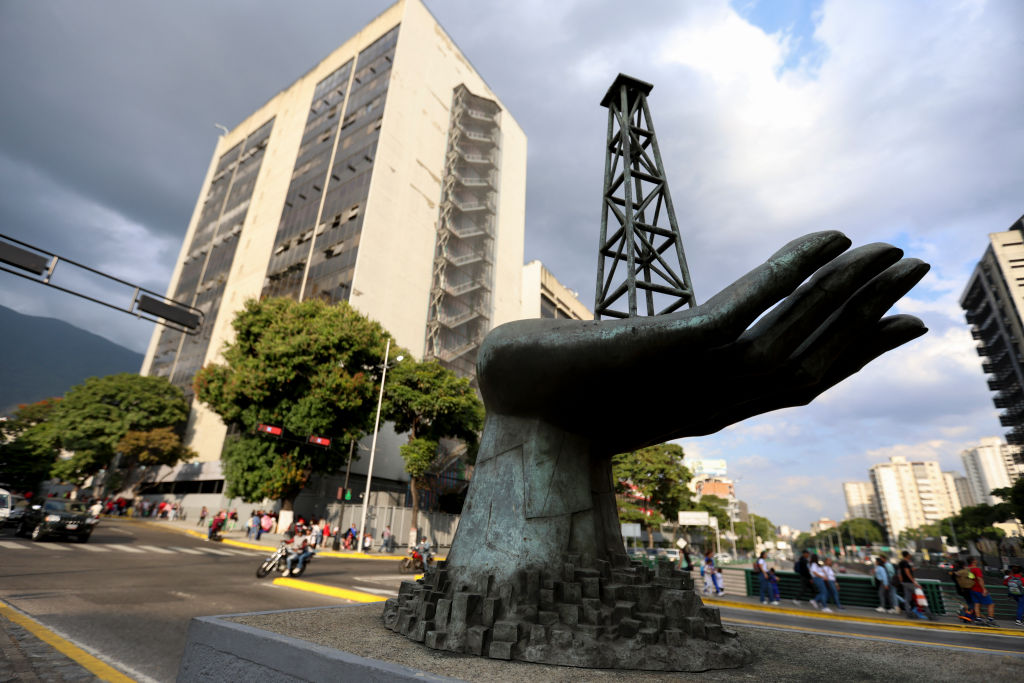Energy Update: A Look at the Books of Latin America's Big State Oil Firms
Energy Update: A Look at the Books of Latin America's Big State Oil Firms
2016 was a difficult year for national oil companies in Argentina, Brazil, Colombia, and Mexico, proving the need for the energy sector reforms in each case.
Latin America’s large state-backed oil companies reported their full-year earnings—and with modest results to show. Ecopetrol, Pemex, Petrobras, and YPF all posted either flat or declining figures in their finances and production for 2016. The results stem from an unfavorable combination of persistent low oil prices, adverse economic conditions, and domestic events that took a toll on operations and investments. Earnings from these companies represent a significant source of government revenue and their performance can have a strong ripple effect throughout the broader economy.
But 2016 was not a one-off year. Most of these national oil companies have been hobbled by lackluster results due to issues that predate the plunge in oil prices in 2014.
The ongoing difficulties forced changes. Each has undergone its own form of radical shifts in corporate strategy. With the support of government policy, the firms adopted market-oriented reforms that aim to attract greater foreign investment in order to boost operating efficiencies and sustain long-term production. The effects of the reforms will not be felt for several years but, as 2016 continued to show, the changes were much needed.
Ecopetrol
Colombia’s state major pinned its 2016 budget to an $80 per barrel oil price. But Brent crude oil prices for the year averaged just $44 per barrel, their lowest level in 12 years. Difficulties at home didn’t help: uncertainty around the peace talks with the Revolutionary Armed Forces of Colombia, border tensions with Venezuela, and the El Niño climate phenomenon all took a hit on operations, said Chief Executive Juan Carlos Echeverry on Ecopetrol’s earnings call. Total production and revenues were both down from 2015. Still, the company managed to turn a net profit of $539 million, mainly by better controlling its costs.
The larger concern for Ecopetrol, however, is its depleting stock of reserves. Ecopetrol’s reserves-to-production ratio—a standard measure of a company’s oil and gas savings account—is just 6.8 years. (For comparison, Petrobras’ is 10.5 years.) New discoveries or acquisitions are needed to avoid drawing them down further.
The company is responding with a revamped strategy that focuses more heavily on offshore exploration. Traditionally an onshore company, more than a third of Ecopetrol’s exploration activity in 2017 will take place offshore Colombia. The new approach can potentially lead to greater international partnerships and investment and relies heavily on learning from its U.S. affiliate operating in the Gulf of Mexico to expand technical knowledge in areas such as drilling offshore wells. And substantial know-how and infrastructure, likely from abroad, would be required to develop an offshore service industry in Colombia.
Pemex
The woes of Petróleos Mexicanos (Pemex) long predate the 2014 oil price decline. Inefficient planning and investment have contributed to a dramatic 32 percent decline in Pemex’s oil production from its peak in 2004.
The losses continued to rack up in 2016. Crude output fell by 5 percent from 2015. Pemex’s net loss of $2 billion in the fourth quarter was its seventeenth consecutive quarterly loss. The company lost $14.3 billion for the year. If there is a silver lining, it’s that Pemex has managed to sharply reduce those losses. The fourth quarter loss was only a third of the previous quarter, while the loss for 2016 marked a 60 percent improvement over 2015.
Mexico is perhaps the poster child for oil sector reform in terms of both the need for it and the pace of change that took place. The country’s deepwater auction in December 2016, the final phase of its first round of public oil bidding, drew a strong turnout from international investors, despite the low-price environment.
That auction has boosted the government’s ambitions to accelerate its oil auctions. Earlier this month, the Energy Ministry updated the five-year hydrocarbons plan published in 2015 to include a regular timetable of oil auctions. The schedule roughly calls for two public auctions every year through 2019. Shallow water and conventional onshore blocks are to be featured in the first half, with deepwater and unconventional blocks to be offered in the second half. The ministry confirmed that Mexico will hold its first-ever tender for unconventional acreage at the end of 2017, a process that aims to exploit the same geological basins that are driving the prolific shale boom in the United States.
Petrobras
Brazil’s state giant Petróleo Brasileiro (Petrobras) posted a net loss of $4.7 billion in 2016, mainly due to heavy impairment charges from earlier in the year. But 2016 did show positive inflections for Petrobras. The company turned an $813 million net profit in the fourth quarter, reversing a $11.9 billion loss from a year earlier. A big driver of those gains were the free-market policies of President Michel Temer that liberalized fuel prices and allowed Petrobras to sell fuel at a profit to domestic consumers.
Petrobras is still the most heavily indebted oil company in the world, with a debt load of $118 billion. Legal costs from the three-year-old Lava Jato corruption investigation have also taken their financial toll. Together they shaped a massive corporate divestment strategy by Petrobras that aims to unload most assets that are unrelated to its pre-salt oilfield developments. Petrobras is looking to sell $21 billion in assets in 2017 and 2018.
The government also plans for 2017 to be a breakneck year for foreign investment in Brazil’s oil sector. To alleviate Petrobras’s burdens, Brazil’s government amended a law last year that prohibited foreign investors from taking an operating stake in the country’s prolific pre-salt fields. It is now planning as many as three upstream auctions this year for pre-salt and non-presalt blocks. Brazil’s Oil and Gas Secretary Marcio Felix indicated at an industry conference in Houston this month that the government is planning to roll out a 10-year schedule of auctions, which would include at least two more pre-salt bid rounds in 2018 and 2019.
YPF
2016 was an adjustment year in general for Argentina’s economy, the effects of which carried over to state-controlled Yacimientos Petrolíferos Fiscales (YPF). Argentine President Mauricio Macri’s devaluation of the peso in late 2015 stoked inflation, raising costs for YPF’s fuel imports and equipment. Its operating income for the year dropped 65 percent from 2015, and total oil and gas output remained flat. More of the same is expected for 2017. Chief Executive Officer Ricardo Darre said that output this year will be on par with 2016, which will do little to curb the roughly 20 percent of the country’s gas demand that comes from imports.
But YPF and Argentina’s focus is geared toward the much longer term. The Vaca Muerta area in Neuquén province is one of the most commercially attractive shale gas formations in the world. And in 2016 Argentina took major steps to support its long-term development. In January, Macri forged an agreement for a new incentive program that will pay producers above-international market prices for shale gas production. The program builds on other measures that Macri has taken to improve the economics of the industry, such as eliminating foreign exchange controls that made it difficult for oil companies to import equipment and repatriate earnings. Of note, he also renegotiated labor deals with local unions, which account for a high portion of industry costs.
The strategy is already bearing fruit. In concert with other efficiency measures, YPF’s drilling costs and break-even price in the Vaca Muerta have significantly improved. And they attracted foreign investors. In February, YPF inked a $300 million agreement with Royal Dutch Shell for a pilot project in Vaca Muerta. Darre called the agreement “just the first step” of a number of joint ventures YPF plans to establish in 2017.










